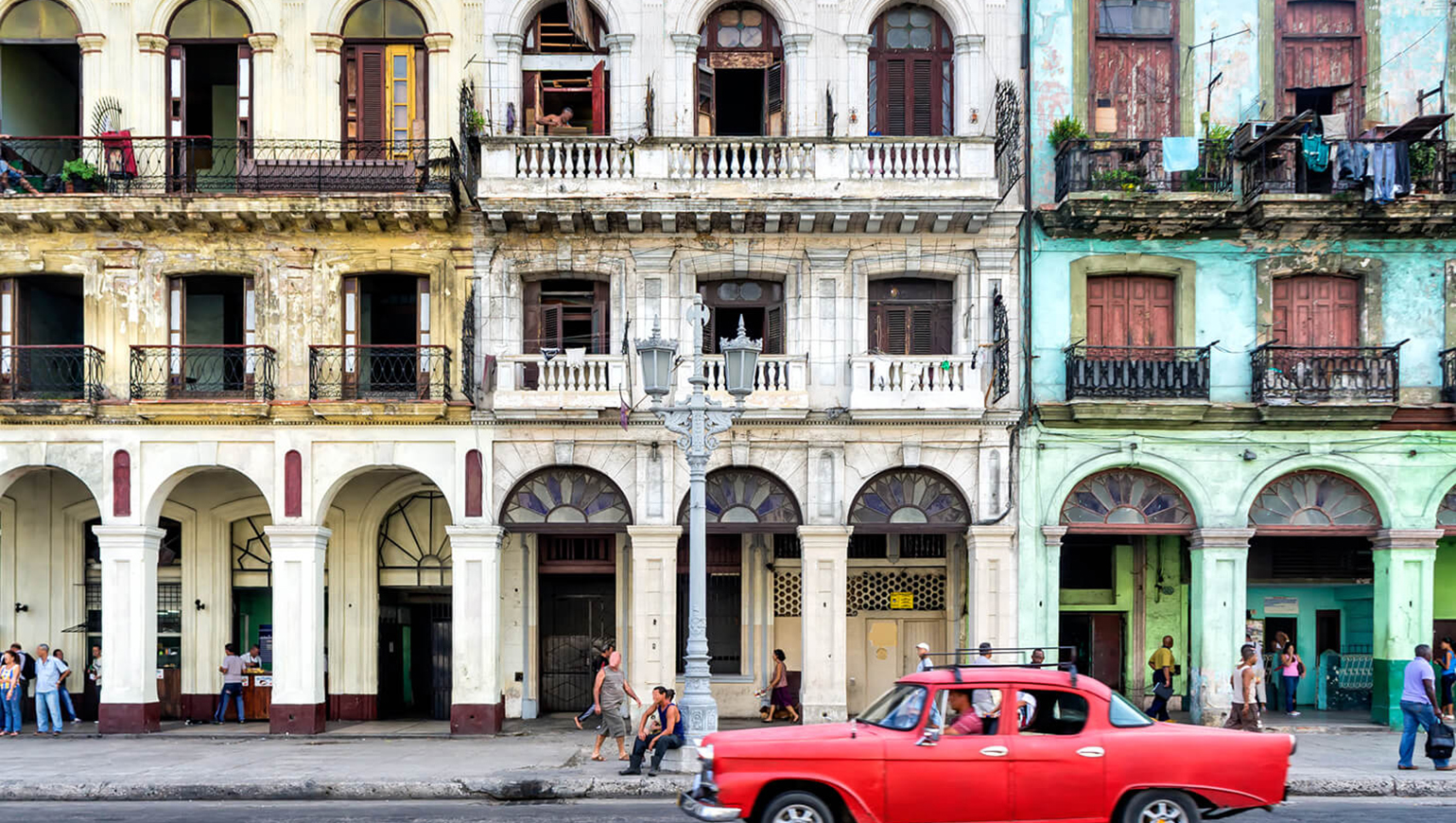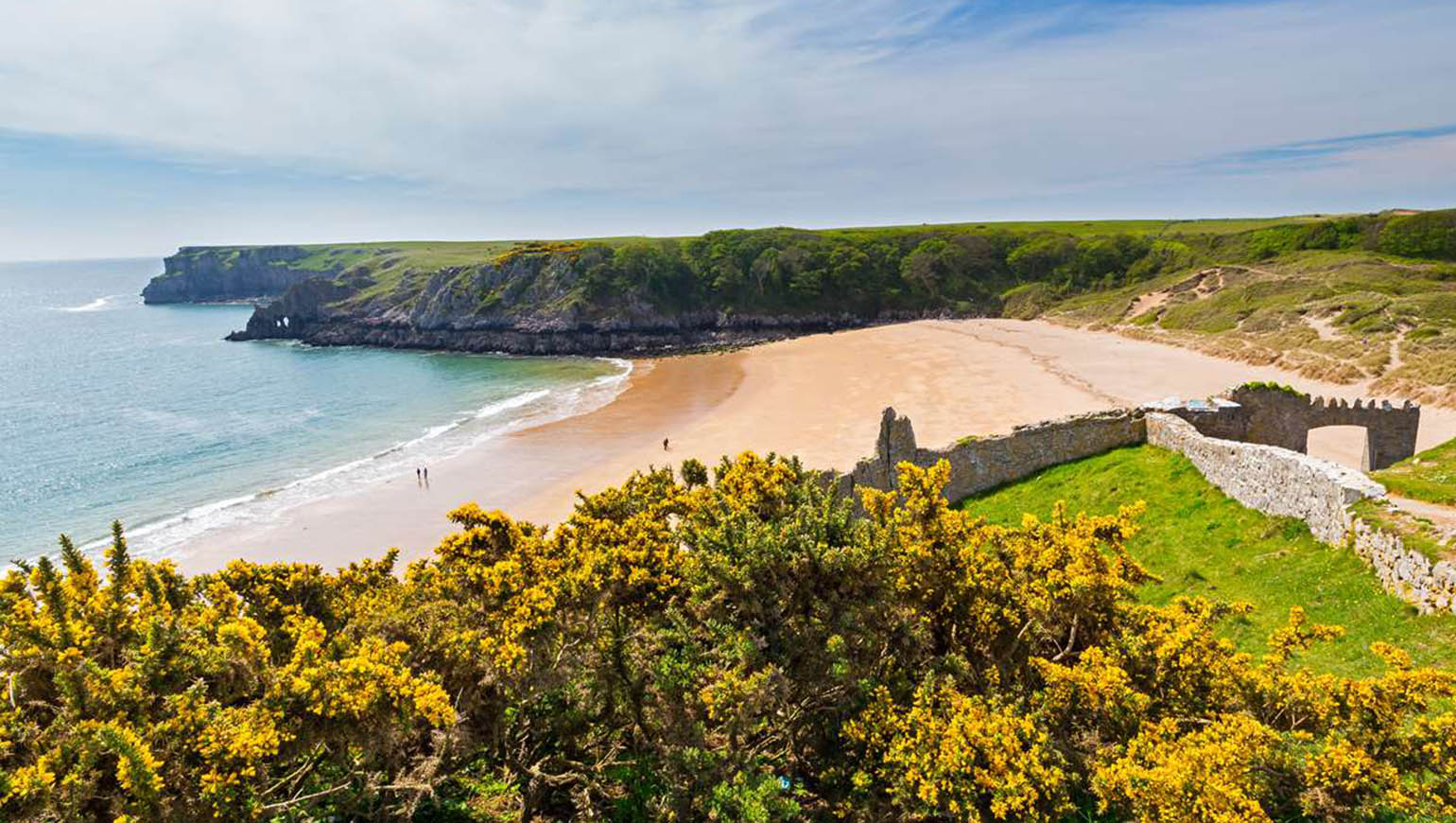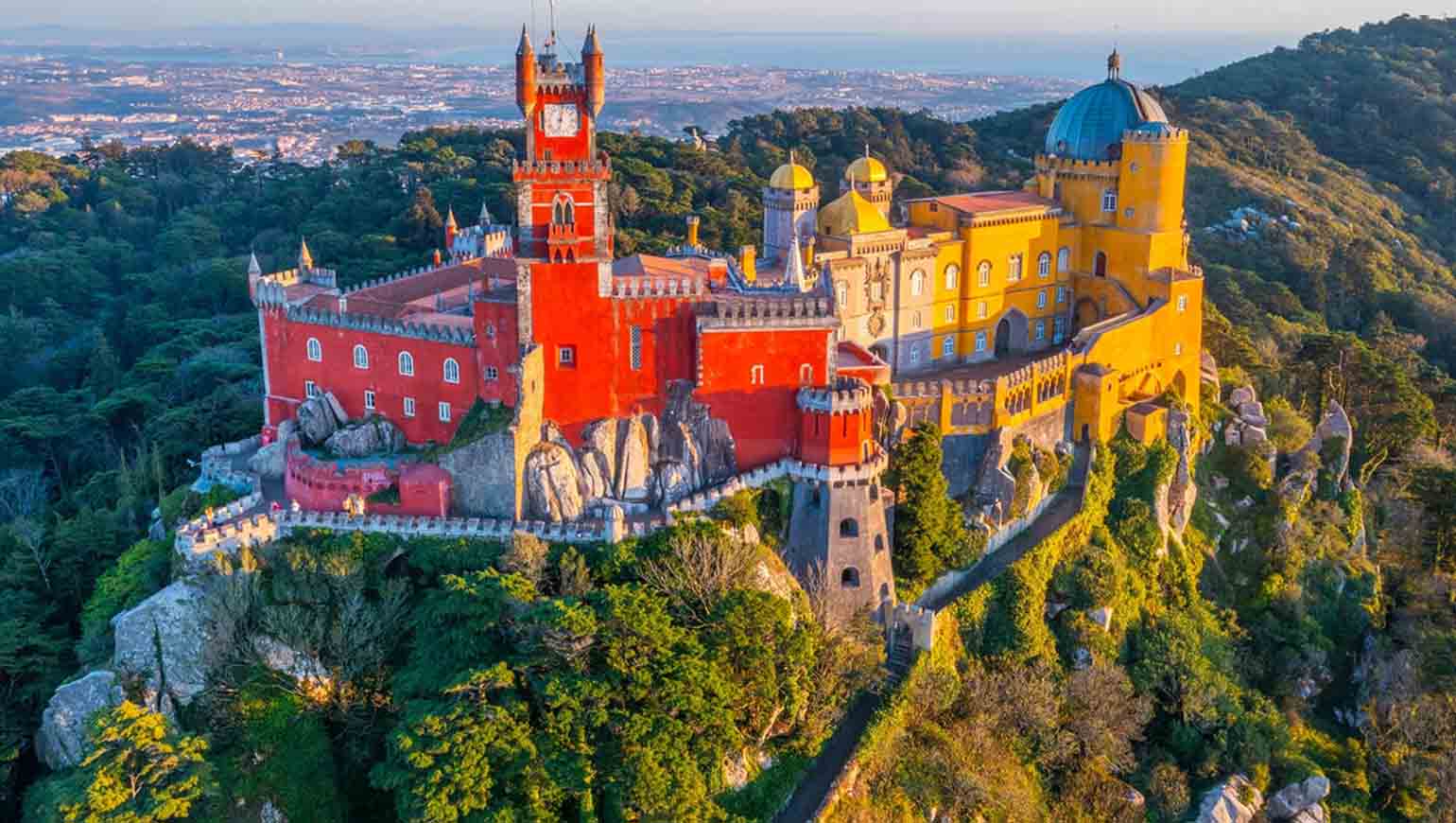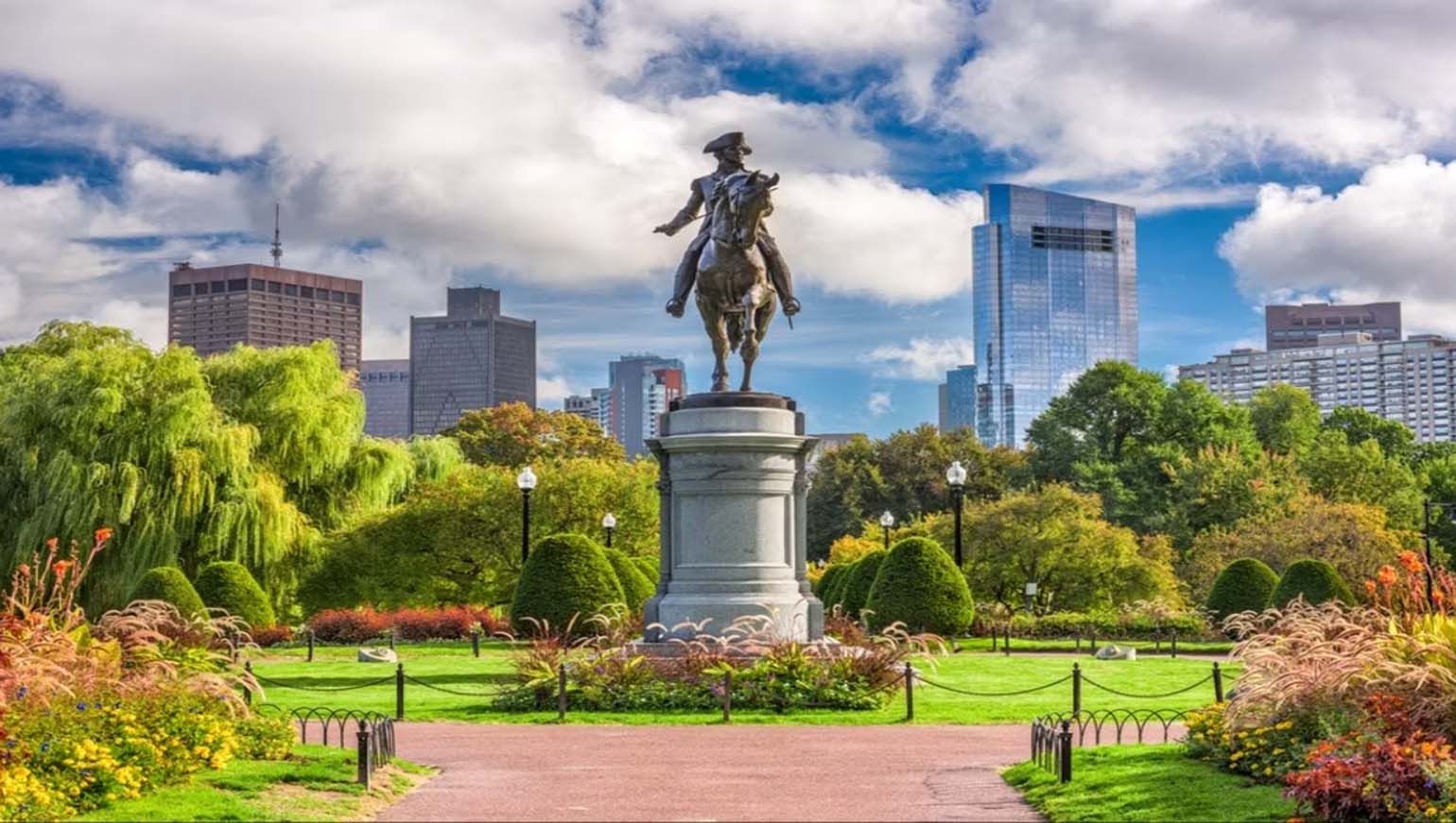Santiago de Cuba is the second-largest city in Cuba, situated in the rugged east of the island. The city breathes revolution and remains to this day an ideal place to learn salsa and son (fast and rhythmic Afro-Cuban dance). However, many visitors overlook Santiago and its half-million inhabitants during a vacation in Cuba, often stopping at Trinidad in central Cuba and bypassing El Oriente, the eastern region where Santiago is located.
Experience Raw Cuba in Santiago
Cuba is more than rum, cigars, and salsa. The Cuban Revolution of 1959 brought international fame to the country, and it remains a socialist state. After six decades of Castro dynasty, President Diaz-Canel has been in power since 2018, but what has actually changed? What remains of the idealism, scarcity, and heroic takeover over half a century ago? To see the real face of Cuba, you must visit Santiago. This less-visited city still exudes the revolutionary atmosphere: authentic, communist, but also plagued by poverty and heat. Here, you’ll see people collecting their food rations with ration books from state-owned stores and experience how rum acts as the social lubricant, the perfect way to forget all your problems. If you’re seeking the true Cuba, head to the rugged Oriente.
Escape Mass Tourism
Since opening its borders to tourists in the 1990s to escape a deep economic crisis, tourism in Cuba has rapidly grown. When the government allowed casas particulares (bed and breakfasts) and paladares (home-based restaurants) in 2008, visitor numbers soared. Havana has now transformed into a construction site with plans for a five-star hotel featuring a helicopter platform. While still fantastic, the authentic Cuban charm has somewhat faded. Santiago de Cuba remains pure and raw. Prices are lower, and attractions are less crowded. It gets busier only during the July carnival. Due to relatively fewer tourists, there are fewer accommodations and restaurants, and you must be flexible: the city sometimes faces power outages, eggs can run out, and obtaining gasoline can be challenging.
Learn to Dance like a Local in Santiago’s Sexy Dance Schools
Santiago’s dance schools are renowned throughout Cuba and beyond. In rugged Santiago, you can master the basic steps or refine your rhythm and elegance over several weeks. You can book dance vacations with a dedicated salsa instructor or simply drop into Casa de la Musica or Casa de la Trova after 10 PM. Cuban nightlife starts late, so don’t be surprised if the dance hall is still empty after dinner. However, Santiago de Cuba is a poor city, and opportunity makes a thief. Therefore, don’t leave belongings on the table while you dance and always take a reliable taxi back to your accommodation at night (such as one arranged by your hotel, dance school, or casa where you stay).
Visit the Tomb of Fidel Castro
Fidel Castro is buried in the Santa Ifigenia cemetery in Santiago de Cuba, alongside Cuban independence fighter Jose Marti and saxophonist Compay Segundo. The cemetery dates back to 1868, and numerous historical figures are buried here in adorned tombs, mausoleums, and grandiose graves, including the revolutionary Antonio Maceo and Cespedes. Entrance to the cemetery costs 3 CUC (approximately € 2.50), with an additional fee for cameras. Every half hour, a ceremony takes place for the changing of the guard at the mausoleum of Jose Marti and the tomb of Fidel Castro. Fidel Castro is buried in Santiago de Cuba because the failed assault on the Moncada barracks in 1953 is seen as the first step toward Revolution. Thus, Santiago de Cuba became the heart of the Cuban Revolution, to which Fidel devoted his life.
Taste the Finest Santiago de Cuba Rum
Santiago de Cuba was home to Bacardi until the state seized foreign businesses in 1961, prompting the rum factory to move its headquarters to Puerto Rico. Today, the city produces the eponymous Santiago de Cuba rum. This rum is slightly more expensive than its competitor Havana Club Rum and comes in various types: young, 3, 5, 7, 8, or 20 years old. However, the real deal is Matusalem rum, officially not exportable and thus only available in Santiago de Cuba. This 15-year-old rum has a somewhat sweet taste and is popular among enthusiasts.
These highlights capture the essence of Santiago de Cuba, a city rich in history, culture, and revolutionary spirit, offering a unique perspective on Cuba beyond its popular tourist hubs. Whether exploring its historical sites, dancing to its rhythms, or savoring its rum, Santiago de Cuba promises an authentic and unforgettable experience.
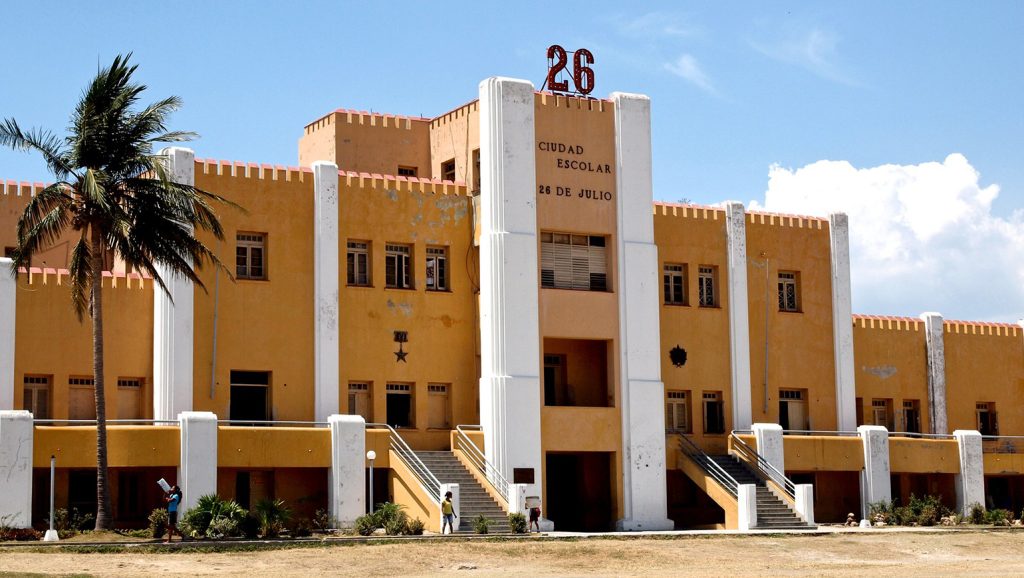
Explore the Former Moncada Barracks and Learn About the Cuban Revolution
The Moncada Barracks now serve as an ordinary school building. Only the bullet holes on its façade remind passersby of the events of 1953. The assault was seen as the starting point of a guerrilla struggle against the ruling regime and the subsequent Revolution, initially viewed as an attempt to overthrow the then-leader Batista. However, this site is crucial to visit in Santiago de Cuba to understand the story of the Cuban Revolution. During the assault, Fidel was captured, imprisoned, and famously declared during his trial, “History will absolve me.” He was released two years later, as Batista granted amnesty in an attempt at reconciliation. In hindsight, this marked the beginning of the end for his regime. Santiago continues to be affectionately called “where the Revolution lives,” “the heroic city.”
Embark on a Pilgrimage to Cuba’s Main Cathedral, El Cobre
A short half-hour from Santiago de Cuba’s center lies El Cobre, a mining town of about 7,000 residents renowned for its grand basilica, Santuario Nacional de la Caridad del Cobre, dedicated to the Virgin Mary. The basilica, visited by Pope Francis in 2015, is a significant pilgrimage site for followers of the Afro-Cuban Santeria faith. Built atop a hill, it overlooks Santiago’s wooded hills. When visiting El Cobre, it’s advisable to cover your shoulders and knees. Outside the church, you can purchase candles and prayer beads. Entrance to the church is free.
Dine in Santiago de Cuba’s Coziest Living Room Restaurants
In Santiago de Cuba, alongside state-run restaurants, you’ll find many paladares (home-based restaurants). Entrepreneurship was long prohibited due to socialist regulations in Cuba. When the regime eased laws, ambitious residents started restaurants in their living rooms, catering to tourists and Cubans from other cities visiting Santiago. Today, you can enjoy delightful meals in the city’s hidden dining spots. Though signage remains forbidden, word of mouth works wonders. Indulge in lamb stew in wine sauce, spicy sautéed shrimp, or butter-fried swordfish.
Sip a Mojito on the Rooftop of Casa Grande Hotel
Mojito, rum, Cuba… an undeniable trinity. Wander through Santiago’s downtown streets and take the elevator up at Casa Grande Hotel to relish a potent cocktail. The view over the city is breathtaking. From here, you’ll see not only the harbor but also the Caribbean Sea and promenades in the city center. Access to the rooftop bar costs 3 CUC (€2.50) and includes a complimentary drink. Additional beverages are charged per consumption.
Visit the Morro Castle

The Morro Castle, or Castillo de San Pedro de la Roca, lies 6 km outside Santiago de Cuba and dates back to 1700. Designed by architect Giovanni Battista Antonelli as a defense against aggressive pirates, today you can visit this imposing structure on the shores of the Caribbean Sea for 5 CUC between 10:00 AM and 5:00 PM. Inside the fort, a museum explains the history of piracy through artifacts, maps, and texts. However, the real attraction is the structure itself, offering stunning views of the tranquil beaches along the Caribbean Sea, banana tree-covered fertile hills, and the city.
How to Travel to Santiago de Cuba?
Antonio Maceo Airport is approximately 12 kilometers from Santiago de Cuba and offers frequent connections to Havana. You can also fly to Santiago de Cuba from Europe, for example, from Rome, Paris, or Madrid. Prefer not to fly? You can travel from Havana to Santiago via Viazul bus or by rental car, though the journey spans about 1000 km. Be prepared for rough roads and many horse-drawn carts from Camaguey onward. One advantage is minimal traffic (since 1959, only a few cars have been imported).
These highlights offer a glimpse into Santiago de Cuba’s rich history, vibrant culture, and enduring revolutionary fervor, providing a unique perspective on Cuba beyond its more frequented tourist destinations. Whether exploring its historical landmarks, immersing in its lively music and dance scene, or savoring its distinctive cuisine, Santiago de Cuba promises an authentic and unforgettable experience.
